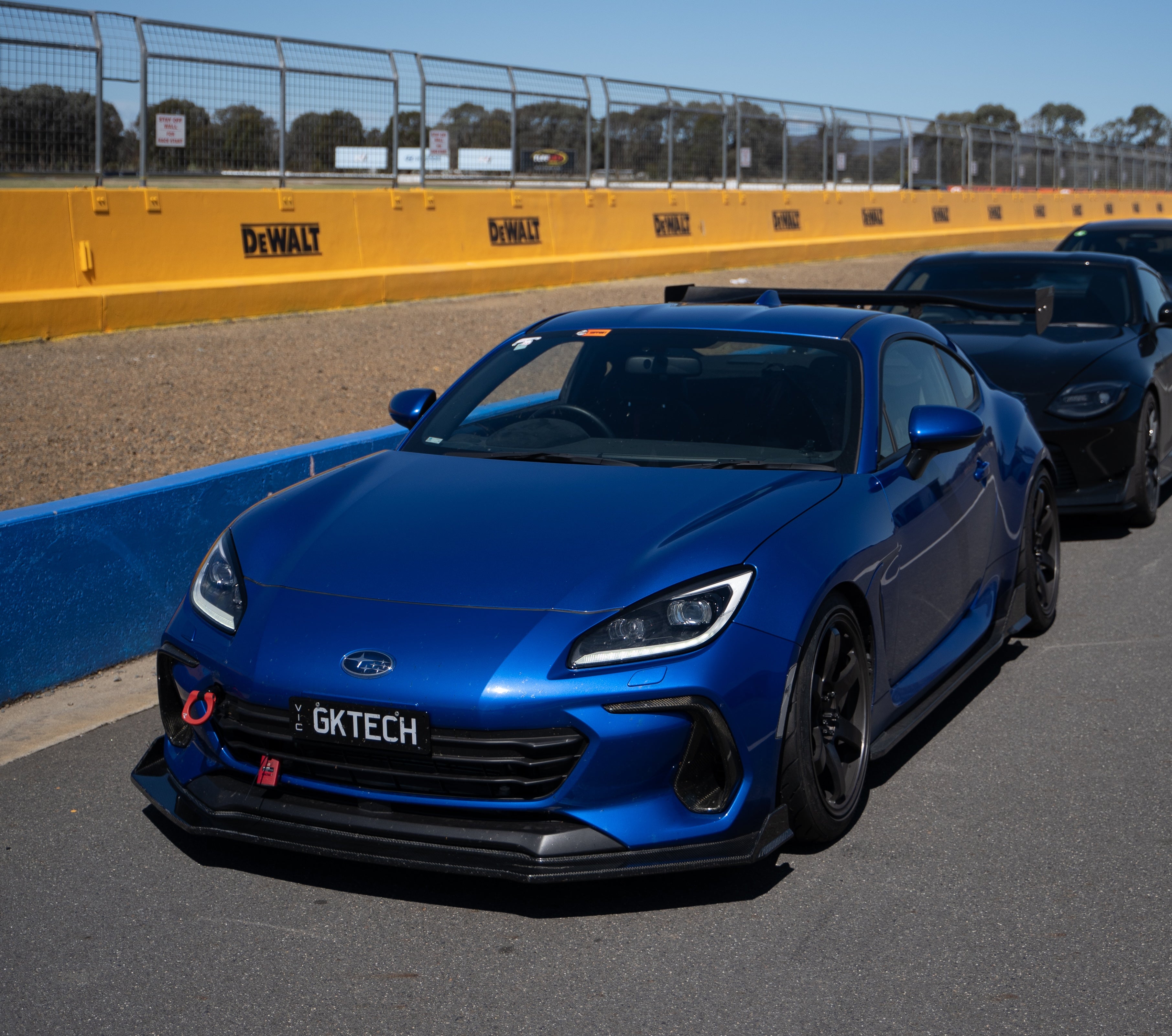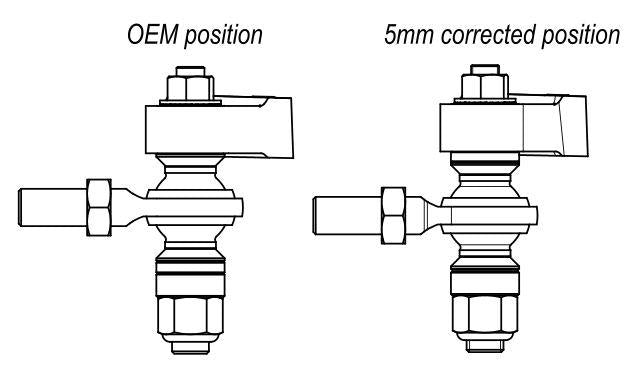Introduction
Dual master cylinder setups have always been the go-to braking setup for any high-end race series. They offer the driver a direct feel, adjustable front to rear brake bias and can be designed to suit just about any braking requirements from formula one, to formula drift. Traditionally, installing a dual master cylinder requires the use of a self-contained pedal box, which can be very expensive and require considerable modification for anyone without a custom designed race car. However, using Willwood dual master cylinder conversion we were able to convert our favourite chassis to dual master cylinders while retaining the OEM pedal assembly. This conversion deletes the brake booster and ABS, while offering some significant improvements over the OEM braking system, particularly adjustable brake bias which is essential to get the most performance from your vehicle, regardless of your chosen discipline.

Figure (1) GKTECH Dual Master Cylinder Assembly
Why Choose an Aftermarket Dual Master Cylinder Setup?
- Drifting
Drifting demands precise control over the vehicle, and this can be greatly benefitted with adjustable brake bias. In drifting the brake bias may be adjusted to better suit an individual’s driving style and how they use the brakes. One drifter who primarily uses their foot brake on corner entry may desire a very different brake bias compared to a driver who primarily uses the foot brake mid corner. Add in the multitude of different brake calipers, rotor, pad and tyre combinations, and having adjustment of the brake bias becomes very important. As such, it is desirable to be able to make small adjustments to the brake bias at the track, or large adjustments can also be made by swapping out a master cylinder. This kind of adjustability is only possible with a dual master cylinder setup.
Previously, many teams in formula drift achieved a dual master cylinder setup though the use of pedal boxes. However, according to the 2024 Formula Drift ProSpec rules guide, pedal box assemblies are prohibited beyond the 2023 season (pedal boxes are not restricted in Pro class). This restriction encourages drifters to seek alternatives that comply with the regulations without losing these performance advantages.

Our dual master cylinder conversion keeps the OEM brake pedal assembly to remain compliant with Formula Drift ProSpec, while retaining the brake bias adjustability of a full pedal box.
You may be wondering why it is beneficial to be able to manually control brake bias rather than letting the ABS unit control it automatically? In theory, an ABS unit should be able to limit lockups and ensure optimum braking at all times, much better than any driver. However, in practice, the OEM ABS unit that came with your vehicle is ill equipped to the task. Many drivers report their ABS unit as being unpredictable, sometimes helping, sometimes hindering, which is not what you want when slamming on the stoppers at the end of the main straight! Our dual master cylinder conversion removes the ABS system resulting in a more predictable and reliable brake feel.

Figure (3) Wilwood Remote Balance Bar Bias Adjuster
On the track, precise control over brake bias is crucial for optimizing performance. Essentially it enables us to ensure that both the front and rear brakes are working at their maximum potential without causing a lockup. When combined with Wilwood’s bias adjustment knob, the aftermarket dual master cylinder setup provides the ability to fine-tune brake bias while on track.
There are many reasons you may want to adjust the brake bias throughout a session or track day:
- Tyre Temperature.
- Tyre Pressures.
- Tyre Degradation.
- Driver weight.
- Varying fuel load.
- Track Temperature.
-
Brake wear.
- Brake temperature.
- Brake system changes.
- Spring stiffness change.
- Anti-roll bar adjustment.
- Wet or dry weather.
-
Driver preference.
With all these variables constantly affecting your optimal brake bias, it becomes clear why brake bias adjustment is an important tool for any track-focused machine!
How is the bias adjusted?
In the most basic operation of the balance bar system the input force from the pedal (red arrow) is passed into the pivot (purple dot) and then separated evenly to the front and rear master cylinders (fig 4(a)). When the balance bar is at the centre of its adjustment, this force will be split evenly between the master cylinders.
By rotating the balance bar shaft (by hand or with adjustment knob), the location of the pivot is shifted (fig 4(b)). By shifting the pivot, the force going to the rear master cylinder is reduced and to the front master cylinder is increased. This demonstrates the brake bias being adjusted forward.

Figure (4) Balance Bar Bias Adjustment Diagram
Please note, that while this above diagram demonstrates how the front to rear brake bias can be adjusted it does not show how the brake bias is calculated holistically. Equal force delivered to each master cylinder does not equal to a 50/50 brake bias at the wheels. To accurately calculate the brake bias many other variables must be considered:
- Master Cylinder sizes.
- Brake Caliper piston areas.
- Brake rotor diameters.
- Brake pad positions.
- Pad friction co-efficients.
-
Tyre rolling diameters.
These calculations are outside the scope of this blog post, however it is extremely important to do your research prior to purchasing to ensure that you buy the correct size master cylinder. Master cylinder selection must not only consider bias, but also pedal travel and force. There are many guides online which go through these calculations step by step, and often a spreadsheet can be most beneficial.
Why It Might Not Be for You
- Legalities for Street-Driven Vehicles
While the aftermarket dual master cylinder setup provides performance benefits on the track, it's essential to consider the legalities and safety implications on road-driven vehicles. A dual master cylinder conversion involves the removal of both the brake booster and ABS systems. Most regions will have regulations governing modifications to braking systems, and it's crucial to ensure compliance with local laws before making such alterations.
- Increased Brake Pedal Force
The conversion to an aftermarket dual master cylinder setup typically leads to a significant increase in brake pedal force due to the removal of the brake booster. While this can be advantageous on the track, where precise control is paramount, it may not be ideal for everyday road driving. Some drivers prefer the assistance provided by a brake booster, particularly in situations where regular quick and forceful braking is required. The aftermarket dual master cylinder setup removes the brake booster, and as a result, drivers accustomed to the added assistance may need time to adjust to the new braking dynamics.
Conclusion
In conclusion, the aftermarket dual master cylinder setup emerges as a versatile solution, offering precise control and adjustable brake bias for both drifting and track focused vehicles. By retaining the OEM pedal assembly compliance is ensured with Formula drift ProSpec technical regulations, while retaining full brake bias adjustment. On track, manual bias adjustment gives you full control to utilise your braking system to the maximum, doing away with any unpredictable OEM ABS systems. Considerations should be given to the increase in pedal force, and legalities surrounding braking system modification especially for on-road vehicles.






